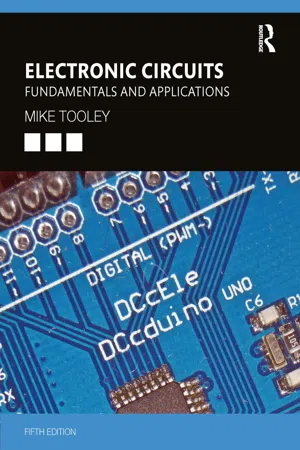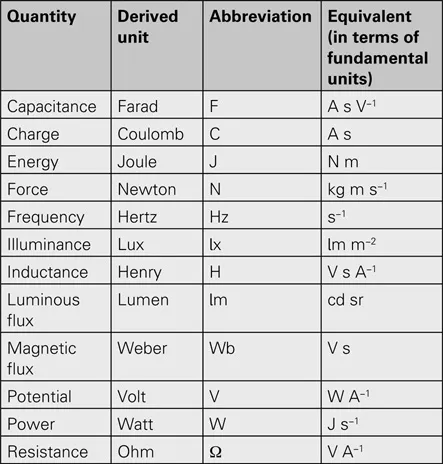
- 510 pages
- English
- ePUB (mobile friendly)
- Available on iOS & Android
About This Book
Electronics explained in one volume, using both theoretical and practical applications.
Mike Tooley provides all the information required to get to grips with the fundamentals of electronics, detailing the underpinning knowledge necessary to appreciate the operation of a wide range of electronic circuits, including amplifiers, logic circuits, power supplies and oscillators. The 5th edition includes an additional chapter showing how a wide range of useful electronic applications can be developed in conjunction with the increasingly popular Arduino microcontroller, as well as a new section on batteries for use in electronic equipment and some additional/updated student assignments.
The book's content is matched to the latest pre-degree level courses (from Level 2 up to, and including, Foundation Degree and HND), making this an invaluable reference text for all study levels, and its broad coverage is combined with practical case studies based in real-world engineering contexts. In addition, each chapter includes a practical investigation designed to reinforce learning and provide a basis for further practical work.
A companion website at http://www.key2electronics.com offers the reader a set of spreadsheet design tools that can be used to simplify circuit calculations, as well as circuit models and templates that will enable virtual simulation of circuits in the book. These are accompanied by online self-test multiple choice questions for each chapter with automatic marking, to enable students to continually monitor their own progress and understanding. A bank of online questions for lecturers to set as assignments is also available.
Frequently asked questions
Information
Chapter 1
Electrical fundamentals
Fundamental units
Derived units


Measuring angles
Table of contents
- Cover
- Half Title
- Title Page
- Copyright Page
- Table of Contents
- Preface
- A note for teachers and lecturers
- A word about safety
- 1 Electrical fundamentals
- 2 Passive components
- 3 D.C. circuits
- 4 Alternating voltage and current
- 5 Semiconductors
- 6 Power supplies
- 7 Amplifiers
- 8 Operational amplifiers
- 9 Oscillators
- 10 Logic circuits
- 11 Microprocessors
- 12 The 555 timer
- 13 Test equipment and measurements
- 14 Fault finding
- 15 Sensors and interfacing
- 16 Circuit simulation
- 17 The PIC microcontroller
- 18 Electronic applications and the Raspberry Pi
- 19 Electronic applications and the Arduino
- 20 Circuit construction
- Appendix 1 Student assignments
- Appendix 2 Revision problems
- Appendix 3 Answers to problems with numerical solutions
- Appendix 4 Semiconductor pin connections
- Appendix 5 1N4148 data sheet
- Appendix 6 2N3904 data sheet
- Appendix 7 Decibels
- Appendix 8 Mathematics for electronics
- Appendix 9 Useful web addresses
- Appendix 10 A low-cost bench power supply
- Index